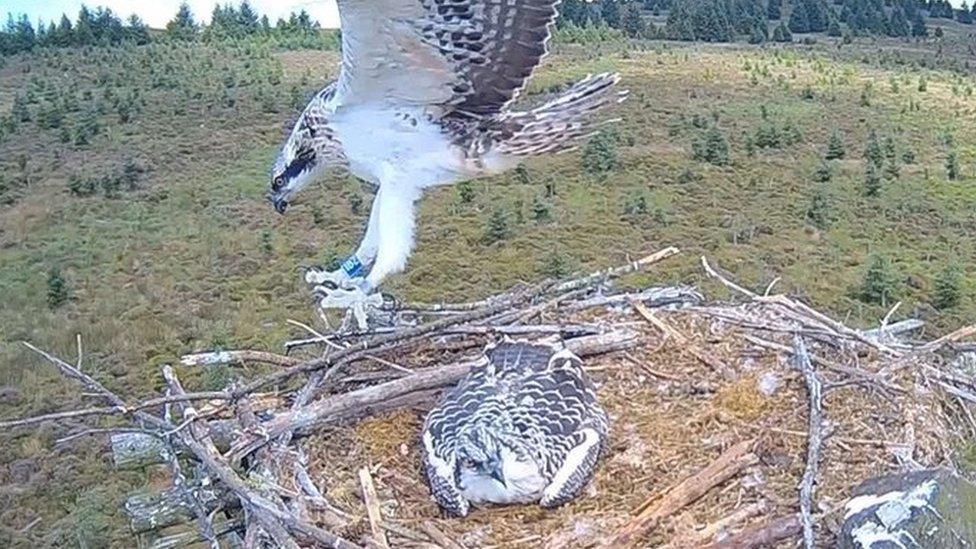Kielder Forest osprey chicks get ID rings fitted
- Published
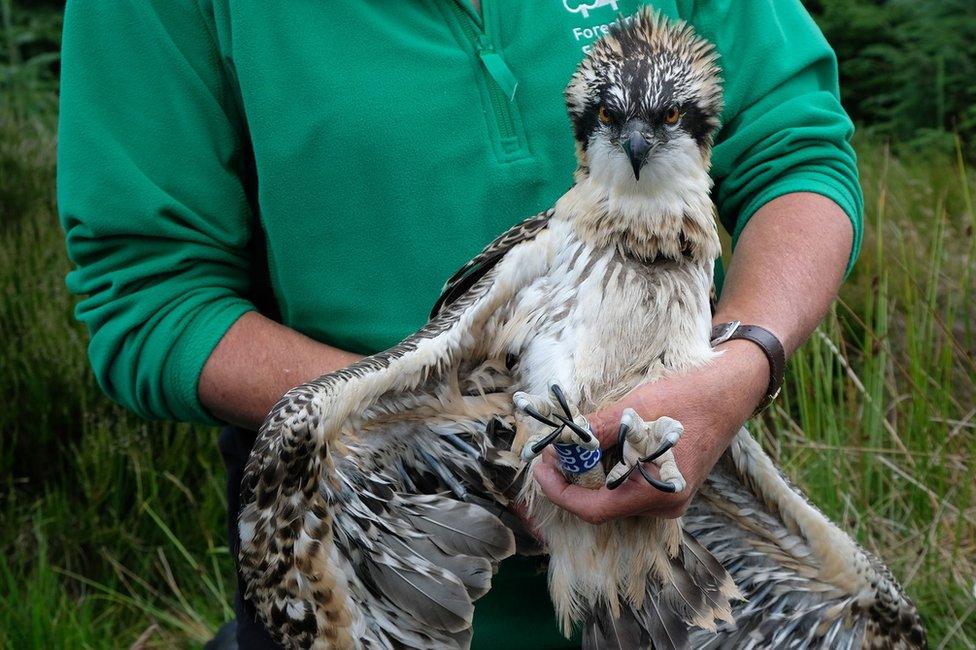
It allows eight chicks to be monitored by specialists in Kielder Forest
Tree climbers and wildlife experts have joined together to ring eight rare osprey chicks in Kielder Forest.
The birds of prey returned to the Northumberland site in 2009 for the first time in at least 200 years with them successfully breeding.
There are eight occupied nests in the 63,000-acre forest in 2023, and five of them produced healthy offspring.
The chicks were fitted with identification rings on their legs so their progress can be monitored.
After climbers lowered the youngsters to the ground they were each given a unique ring on one leg and a numbered blue coloured tag on the other.
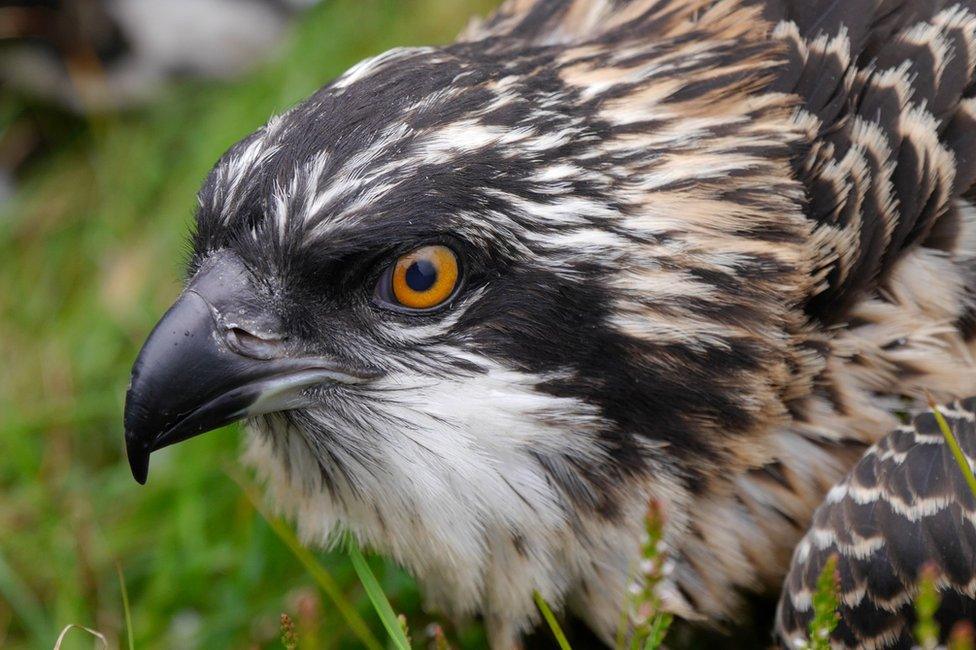
The birds of prey have nested at the Northumberland site since 2009
This shows they were born in England and Wales and the tag can be read by people using cameras and scopes, meaning they can be tracked throughout their lives.
Tom Dearnley, Forestry England ecologist, said: "The sheer scale of Kielder creates an excellent environment for rare and protected species to recover."
The fish-eating hunters have nested in the forest between March and September each year since 2009.
Kielder Osprey nests given 24-hour live stream
However, some birds did not return in 2023 and others are searching for partners.
Experts believe there has been a change to their hierarchy with the absence of two of the older and most productive males, who could be dead.

The wingspan of an osprey can reach over 5ft (152cm) when it is fully grown
One of them previously produced 26 chicks.
His two-year-old grandson, named Elsin, has been seen nearby and looks set to carry on the dynasty.
In 2022 a milestone was reached when Kielder Forest's 100th osprey chick took flight.

Follow BBC North East & Cumbria on Twitter, external, Facebook, external and Instagram, external. Send your story ideas to northeastandcumbria@bbc.co.uk, external.
- Published28 June 2023
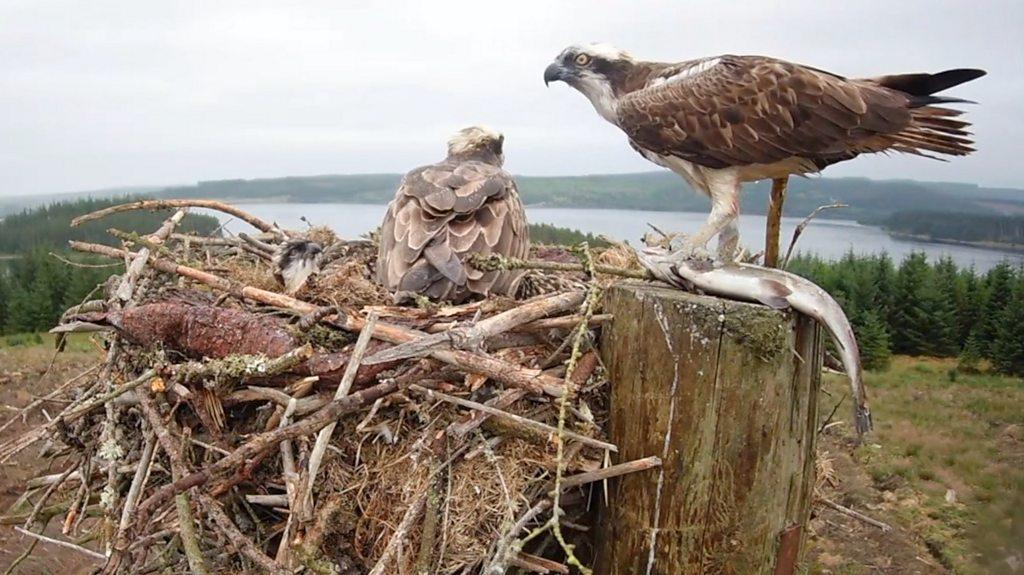
- Published20 April 2023
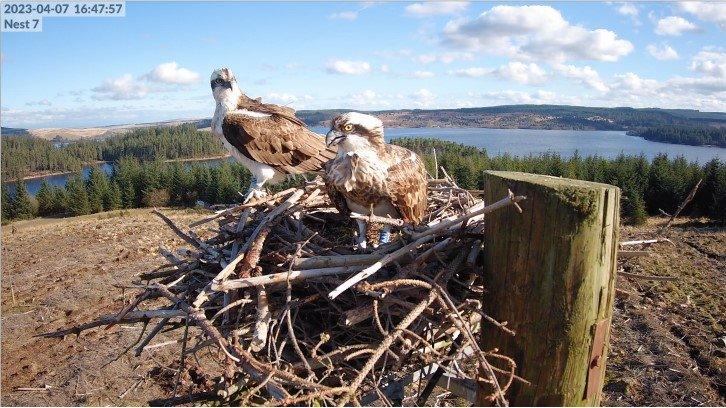
- Published29 July 2022
